The Project
葉生信件翻譯工程
This project sought to make available Chinese-language documents which are held in a predominantly English-language archives. A selection of correspondence from the Yip family and Yip Sang Ltd. fonds (AM1108) was used. One of the difficulties with making these materials available is that there are so few local people who can read the old-style Chinese writing. We decided to digitize the letters so that they are available to readers of the old script throughout the world, and to invite them to contribute their translations and interpretations.
This work, completed in 2008, was done in cooperation with the Department of History at the University of British Columbia. W. Wang translated some of the letters under the supervision of Dr. Henry Yu. We are grateful for the financial assistance of the Government of Canada for the digitization of photographs and letters.
See the result of the joint digitization project with UBC Library: http://www.library.ubc.ca/chineseinbc/search.html
Search the Yip Sang materials: http://digitalcollections.library.ubc.ca/cdm4/search.php?CISOROOT=/yipsang
這個翻譯工作,目的在協助一個以英語為主的檔案館 ;例如温哥華檔案館; 找出最可行的方法,令公眾能夠使用館內的中文資料。工作主要是將部份葉氏家族及其公司的信件(館蔵編號: AM1108),翻譯成英文。 其中最困難的地方,是書信的手寫字體較難辨認,以及解讀信中的舊式文體。為求得到世界各地人仕的幫助, 温哥華檔案館決定將信件製成數碼影像,然後將影像透過互聯網發放到世界各地,好讓有識之士,協助完成翻譯工作。
翻譯工作在温哥華檔案館和卑詩大學歷史系合作下,於2008年完成。而份信件的翻譯是在余全毅博士的指導下,由王小姐完成。
查閱翻譯和數碼化工作的背景資料及成果,請瀏覽以下網址:
http://www.library.ubc.ca/chineseinbc/search.html
查閱葉氏家族及其公司信件的數碼檔案,請瀏覽以下網址:
http://digitalcollections.library.ubc.ca/cdm4/search.php?CISOROOT=/yipsang
Yip Sang
葉生
The Yip family in Vancouver began with Yip Sang’s arrival in B.C. in 1881. Yip Sang, whose real name was Yip Chun Tien (along with two other Chinese names, Yip Loy Yiu and Yip Lin Sang), was born in China in 1845. In 1864, he left his home village, Shengtang Cun, Duhu County in Guangdong province, to travel to San Francisco, where he worked as a dishwasher, cook, cigar maker, and labourer in the goldfields.
Eventually he left for B.C., and in 1881, after first looking for gold in the north, settled in Vancouver and found work as a pedlar, selling sacks of coal door to door. In 1882, he was employed by the Canadian Pacific Railroad Supply Company, where he worked as a bookkeeper, timekeeper, paymaster and then as the Chinese superintendent. In 1885, Yip Sang left the company and returned to China. In 1888, he returned to Vancouver and established the import and export firm of Wing Sang Company.
During his lifetime, Yip Sang had four wives and a total of twenty-three children. He became a naturalized British subject in 1891. Yip Sang was one of the driving forces in the establishment of the Chinese Benevolent Association, the Chinese School and the Chinese Hospital (now Mount St. Joseph’s) in Vancouver. He was a lifetime governor of Vancouver General Hospital, and was also a benefactor of the Public Hospital in Guangdong province in China. He died in 1927.
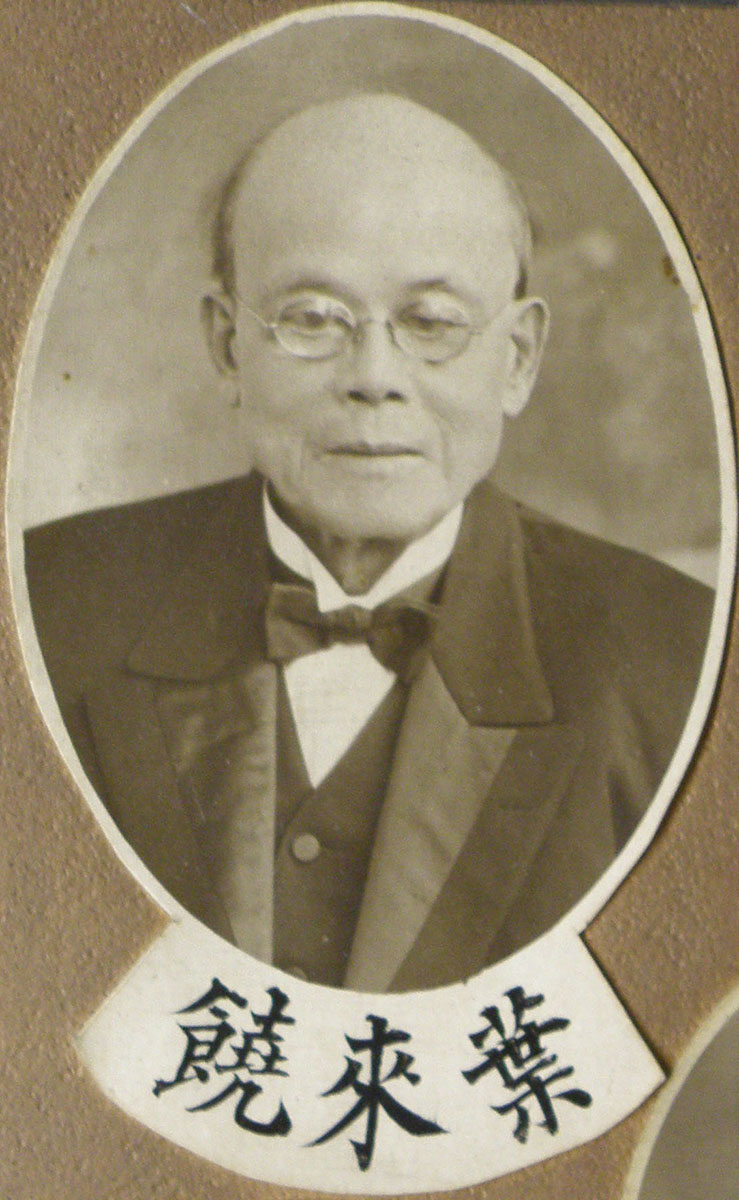
葉生80大壽,攝於1925年10月22日。温哥華檔案館相片編號﹕CVA 749
温哥華葉氏家族是由第一代移民葉生於1881年建立,葉生原名葉春田,又名葉來饒或葉連生。葉生在1845年出生於中國廣東省一個農村,他在1864年離鄉後,曾到美國三藩市, 當過洗碗、廚師、雪茄煙工人, 亦曾在金礦場工作。
葉生在 1881 年遷移到加拿大卑詩省, 曾在省北部淘金。 葉生定居於温哥華後, 曾做過賣煤炭小販。一年後葉生受僱於加拿大太平洋鉄路物料公司, 負責入數、 記錄工時及出納等工作, 及後葉生更獲委為華人監工。 葉生在1885年離職返回中國 , 他在1888年重返温哥華創立永生號 ,經營出入口生意。
葉生有4位妻子及23名子女,他在1891年歸化英籍加人。葉生一生致力推重社區發展,他曾參與建立温哥華中華總會、 温哥華中文學校及温哥華中醫院( 即現時的聖約瑟醫院 ),他亦是温哥華綜合醫院的終身理事。 除温哥華外,葉生也曾捐助廣東省公立醫院。葉生於1927年逝世。
The Wing Sang Company
永生號
Wing Sang Company was one of the wealthiest firms in the Chinatown area of Vancouver. It engaged in contracting Chinese workers for the Canadian Pacific Railway Company; the import and export of general merchandise from China and Japan; money remittance from Vancouver to Hong Kong; and the dry-salt herring business with China. It also functioned as a passenger agency with the Canadian Pacific Steamships Ltd. The Wing Sang Company was renamed Yip Sang Ltd. in 1950.
The Wing Sang Building, at what is now 51-69 East Pender Street (renamed and renumbered in 1907 from 29-35 Dupont Street), was built in 1889 and greatly extended in 1901, and is thought to be the oldest surviving building in Vancouver’s Chinatown.
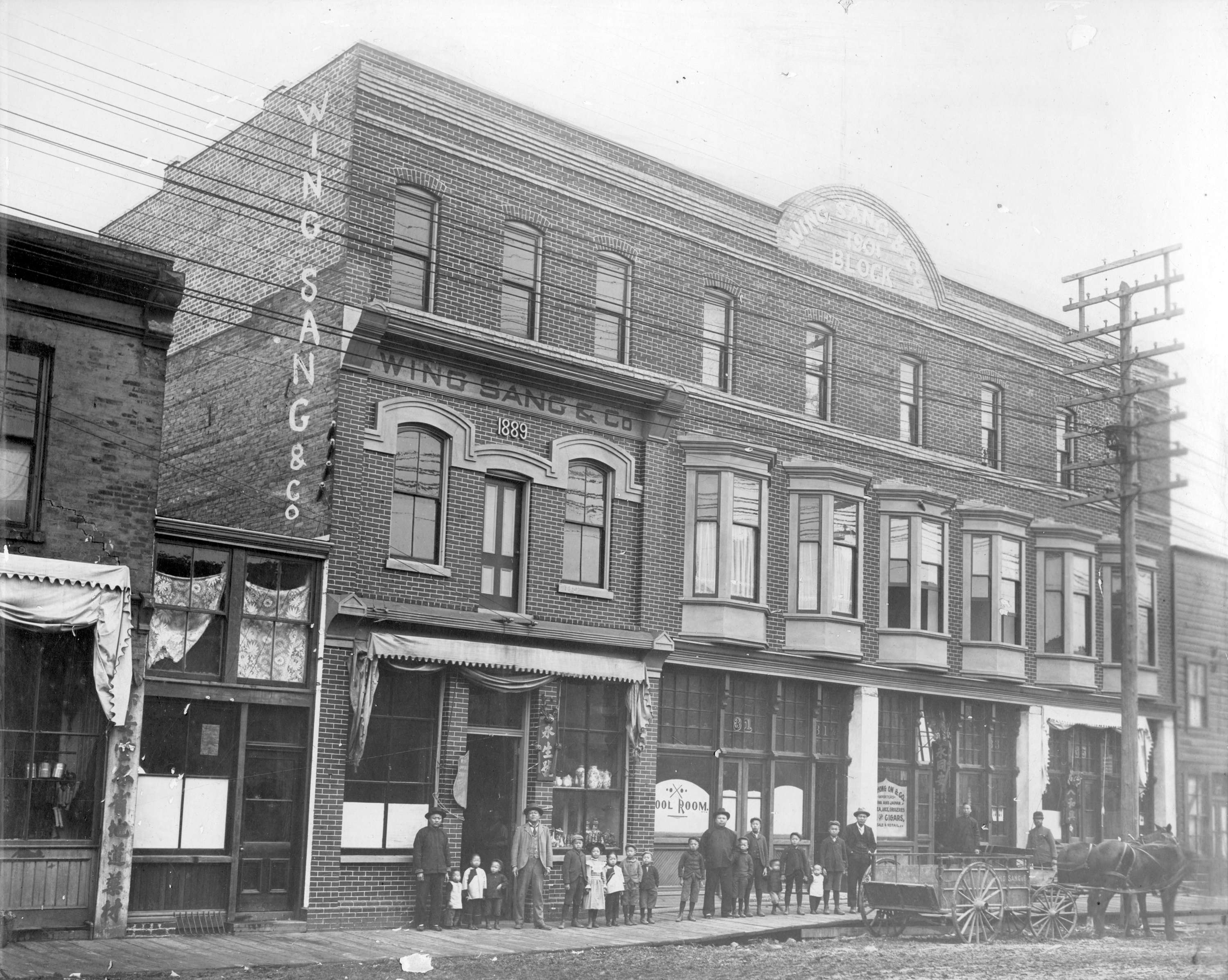
City of Vancouver Archives CVA 689-54
永生號大樓, 攝於約1901-1907年間。温哥華檔案館相片編號﹕CVA 689-54
永生號曾經是華埠其中一間最興旺的商號,主要業務包括為加拿大太平洋鉄路公司輸入中國勞工、中國及日本的商品貿易、温哥華及香港兩地的往來滙款、以及中國的咸魚貿易,永生號亦是太平洋輪船公司的其中一個代理。永生號在1950年改名為葉生有限公司。
永生號大樓位於片打東街51至69號,大樓建於 1889年,及後在1901年作大幅擴建。永生號相信是温哥華華埠現存最古老的建築物。
Acquisition of the Materials
葉氏家族檔案的捐贈及存館過程
In June 1989, Randall Yip contacted the Archives on behalf of the Yip family regarding the Wing Sang Company building, which was still owned by the family but had not been in recent use. The building was to be renovated, and there were papers and artifacts within which might be of historical interest. Over three days that August, five staff members packed and retrieved over forty boxes of materials found in two levels of the building.
Additional materials were later donated by family members, but the majority of the fonds was salvaged from the building.

經泠涷殺菌及除蟲處理後的部份文件,攝於1991年。
1989年6月, 葉氏家族的一名成員,代表家族聯絡温哥華檔案館,商討一批存放在永生號大樓內的文件及文物。當時葉氏家族仍然擁有該大樓,但大樓已空置多時。由於大樓將會 重建,葉氏家族希望該批有歷史價值的文獻,能夠得到妥善保存。 温哥華檔案館遂於同年8月在大樓展開工作,5位檔案館的職員在3日內,整理及包裝超過40多箱文件。
大樓內發現的文件,成為葉氏家族檔案的主要部份。而葉氏家族的成員,亦捐出個人珍藏的家族資料。
Opening the Safes
打開保險庫
Two safes, including a large walk-in, were opened by a professional safecracker. The walk-in safe was unlocked, but the outer set of doors was rusted shut, so the metal had to be cut away with a torch in order to gain access. The contents were protected from the shower of sparks by the inner doors.
The smaller safe was empty.
永生號大樓內有一個大型的保險庫,保險庫有內外两層門。 雖然保險庫沒有上鎖,但由於外門已生銹至不能開啟 ,要由技師用燒焊器,將外門燒開,才能取出保險庫內的文件。由於有保險庫的內門保護,文件未為燒焊火花所破壞。
大樓內亦有一個較小型的保險庫,但裡面空無一物。
Document Recovery
文件修復
Eleven of the boxes of documents were taken from the walk-in safe, but as many of them had been wet and moldy for a long time due to a leak in the ceiling, even after freeze-drying only four boxes could be salvaged. All materials, both wet and dry, were fumigated in a freezer to kill insects.

大型保險庫內,已腐爛的木書架及已發霉的帳簿,攝於1989年。
檔案館職員在保險庫內取出11箱文件,但由於大樓的天花板長年漏水,大部份保險庫內的文件,因長期受潮而發霉。縱使經泠涷殺菌及抽濕處理,只有其中4 箱文件能保存下來。所有保存的文件,無論乾或受潮,都要存放泠藏庫內,進行殺菌及除蟲。
The Correspondence
關於這些信件
Yip Sang acted as an unofficial postmaster for his own employees and other local Chinese workers for correspondence to and from China. Letters addressed using Chinese characters would not be delivered by the Canadian postal system. Yip Sang had the means to transport mail to China using his import/export business. In addition, his building served as a poste restante for incoming mail to be delivered to itinerant workers.
While the characters are no different than those which have been used for thousands of years, the writing style of the time employed fewer characters than are used today to express the same idea, making interpretation a challenge. In addition, many of the handwritten characters are difficult to read. We chose only legible letters for the project.
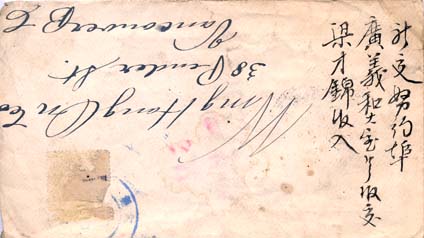
Add. MSS 1108-454 envelope, undated
Add.MSS.1108-454 信封,年代不詳
除了是一位商人外,葉生亦充當其員工的非正式郵政局長,負責收發員工往來温哥華與中國两地的書信。原因是當時 的加拿大郵政局,看不懂信封上的中文書地址。恰巧葉生經營两地貨物的出入口生意,故此員工的家書便連同葉生的貨物,一起往來温哥華與中國,而永生號大樓亦 是員工郵件的代收及待領中心。
雖然中文字已沿用了數千年,但由於當時所用的文體跟現代的有所不同,加上當時的人比現代人用較少的字,來表達意思,令翻譯工作遇到困難。由於大部份信件的字體十分潦草,我們只揀選了一些字體容易辨認的信件,來進行翻譯。
Sample Translations
一些翻譯樣本
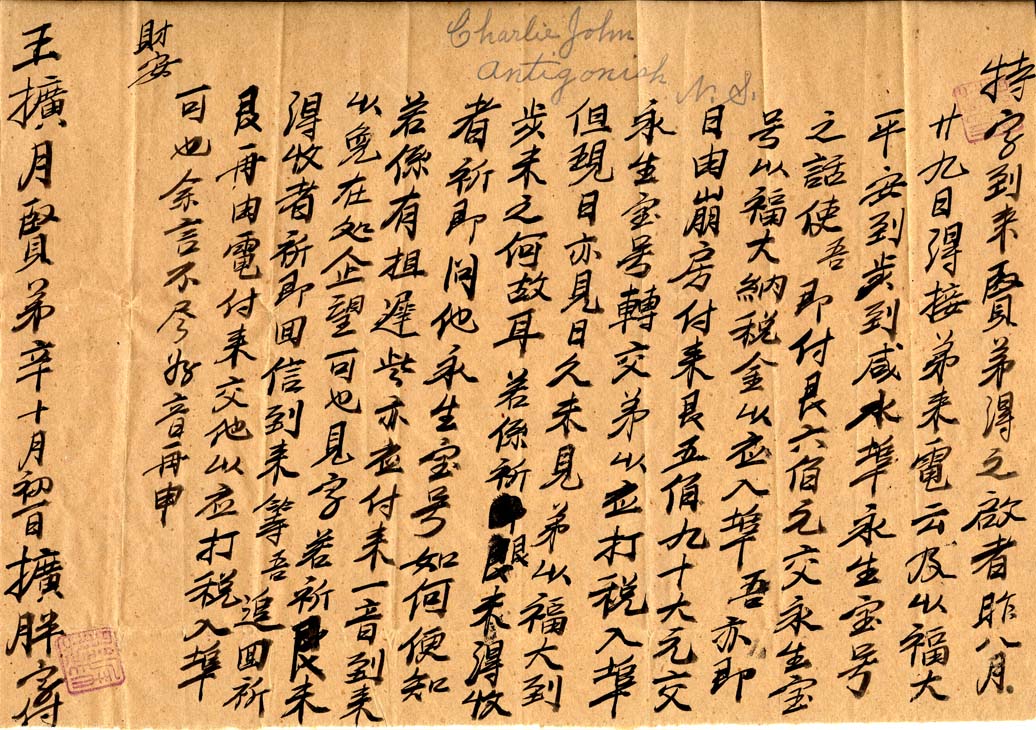
信件編號 352
Add. MSS 1108-352, undated
Add.MSS.1108-352, 年代不詳
Wang Kuopang notified Wang Kuoyue that he has remitted five hundred and ninety dollars to Wing Sang Co. The letter has a literal translation of “being taxed while entering Vancouver (or Canada ).”
王擴胖匯至永生寶號與王擴月五百九十六元。內有“打稅入埠”字句。
![Letter 398 信件編號 398 Add. MSS 1108-398, undated Add.MSS.1108-398, 年代不詳 Cheng Wenzong thanked Mr. Ye for hiring a doctor for the wife of Jiang Boding. She has telegraphed Cheng that "she is recovering [from illness]." 陳文宗來信謝葉公代為為江伯定之妻 " 請醫 ," 其妻已來電“云好轉。”](https://www.vancouverarchives.ca/wp-content/uploads/2014/04/AM1108-398.jpg)
信件編號 398
Add. MSS 1108-398, undated
Add.MSS.1108-398, 年代不詳
Cheng Wenzong thanked Mr. Ye for hiring a doctor for the wife of Jiang Boding. She has telegraphed Cheng that “she is recovering [from illness].”
陳文宗來信謝葉公代為為江伯定之妻 ” 請醫 ,” 其妻已來電“云好轉。”
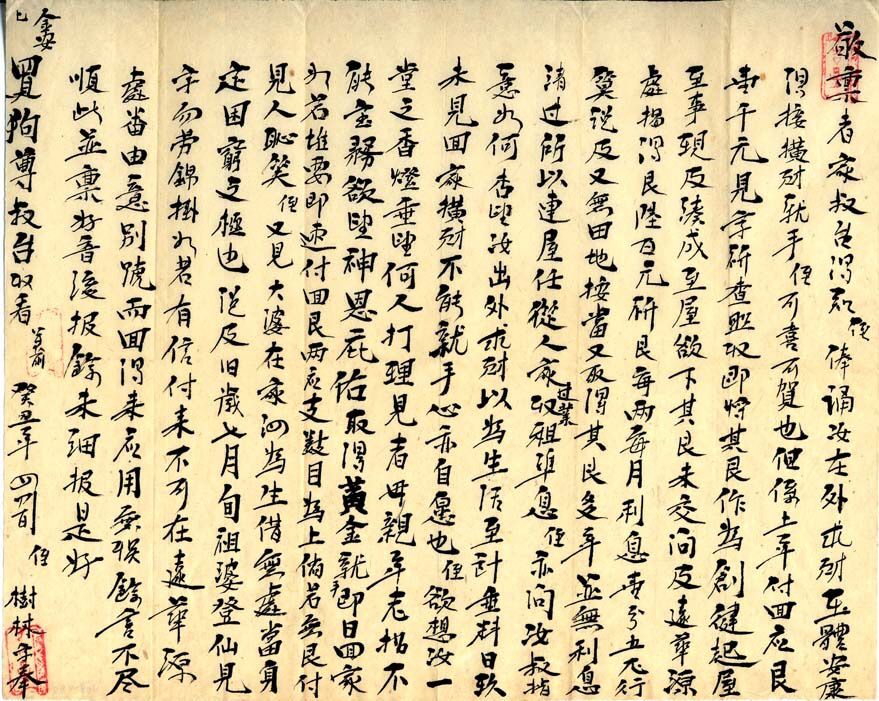
信件編號 430
Add. MSS 1108-430, undated
Add.MSS.1108-430, 年代不詳
Kuang Shulin informed how he spent the 1,000 dollars that Kuang Maiju sent to him in purchasing properties and taking care of underprivileged family members.
鄺樹林告知去年收到叔父寄與之一千元是如何用以置產與照顧家中弱勢者。
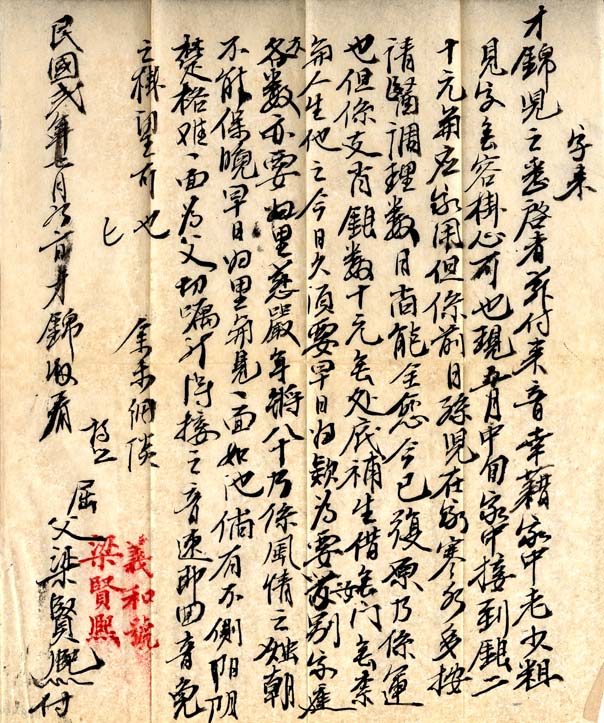
Add. MSS 1108-454 page 1, 1913
Add.MSS.1108-454 頁1, 1913年
I. Liang Xianxi informed Liang Xianen that he has received the twenty dollars, but the medical expense for his grandson was over ten dollars. He also informed that “your parents are both over eighty years old, please return home early.”
信一:梁賢熙告知梁賢恩已收到二十元,但孫兒醫療費“即花十多元,”並叮囑“慈嚴已八十高壽,請儘早回家。”
![Letter #454 信件編號 454 Add. MSS 1108-454 page 2, undated Add.MSS.1108-454 頁2, 年代不詳 II. Liang Huanfu informed his father, Liang Xianen that "our family is fine. The annual family expenses are two hundred dollars and because there are some young ones, the estimate [expenses] is three to four hundred dollars." 信二:梁換福告知父親梁賢恩“家中安好。每年家中花費約兩百元又有幼小者,估計約需三四百元,以應家用。”。](https://www.vancouverarchives.ca/wp-content/uploads/2014/04/AM1108-454-p1.jpg)
Add. MSS 1108-454 page 2, undated
Add.MSS.1108-454 頁2, 年代不詳
II. Liang Huanfu informed his father, Liang Xianen that “our family is fine. The annual family expenses are two hundred dollars and because there are some young ones, the estimate [expenses] is three to four hundred dollars.”
信二:梁換福告知父親梁賢恩“家中安好。每年家中花費約兩百元又有幼小者,估計約需三四百元,以應家用。”。
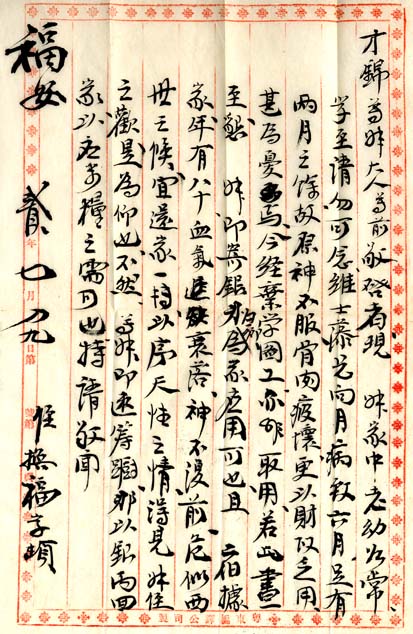
Add. MSS 1108-454 page 3, undated
Add.MSS.1108-454 頁3,年代不詳
III. Liang Huanfu informed his father, Liang Xianen that “he has given up his studies in order to find a job to meet the family need.” His second uncle is already eighty years old, so please mail the money back home early for buying rice and food.
信三:梁換福告知父親,梁賢恩,為應家急已“棄學圖工,”並且“二伯已八十,請早寄銀兩回家,以應米糧之需 。”



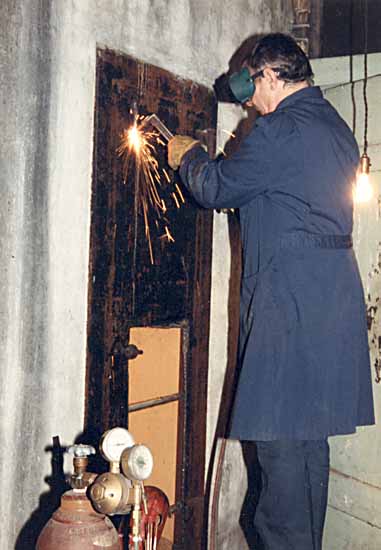
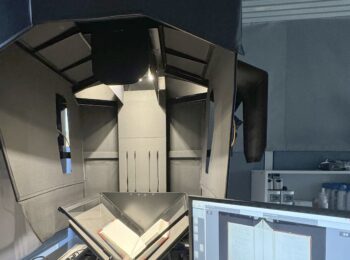
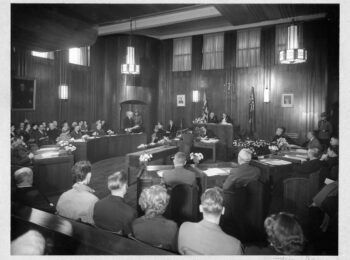
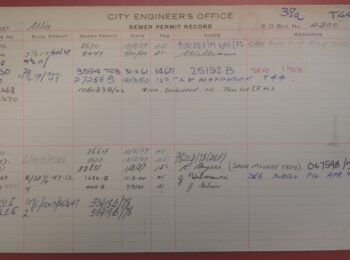
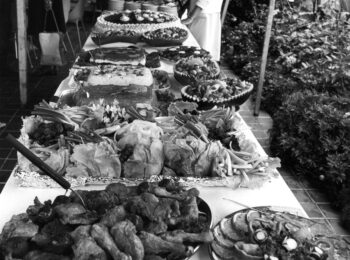

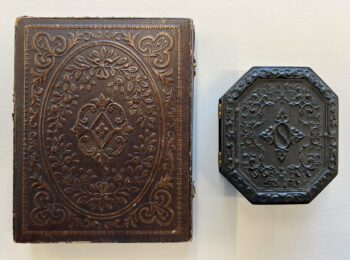
Splendid works!
I am writing a theatre script about Chinatown heritage, its Season Two would focus on the business and benevolent aspects. These collections are priceless for me.
Thank you for the efforts.